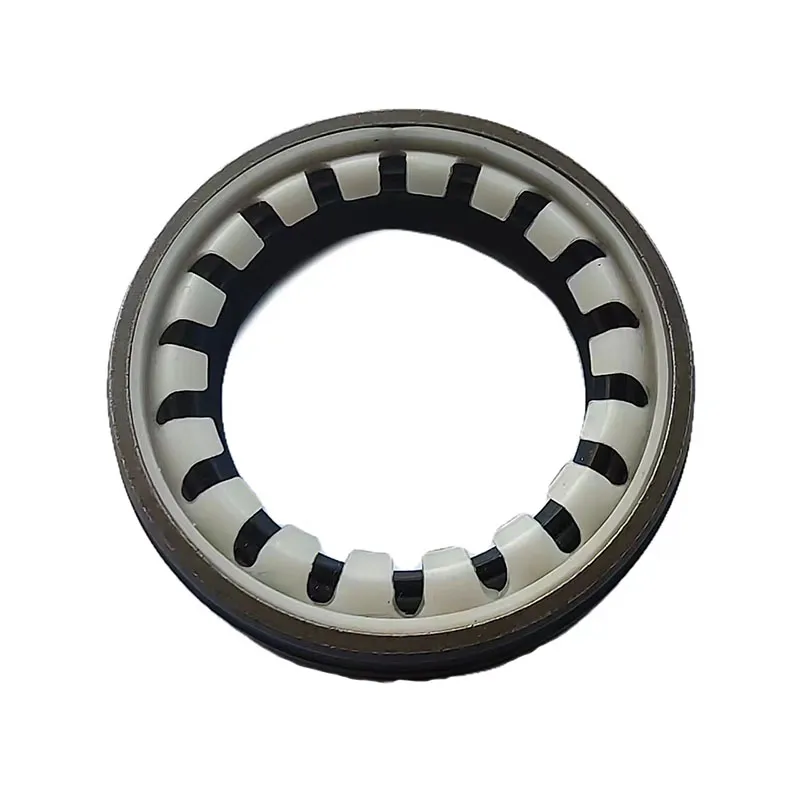power steering hose seals
Understanding Power Steering Hose Seals Essential Components for Smooth Steering
Power steering systems are critical for the effortless maneuvering of vehicles, providing drivers with enhanced control and comfort. At the heart of this system lies an intricate network of components, among which the power steering hose seals play a vital role. These seals ensure that the hydraulic fluid used in power steering systems remains contained, aiding in the smooth operation of the steering mechanism. In this article, we will delve into the importance of power steering hose seals, their types, and maintenance tips to ensure longevity and efficiency.
The Importance of Power Steering Hose Seals
Power steering systems utilize hydraulic fluid to transmit force from the steering wheel to the wheels, making steering less labor-intensive. The power steering hose carries this fluid under pressure, and it is here that hose seals come into play. They are designed to prevent leaks, ensuring that the hydraulic fluid remains contained within the hose system.
Leaking fluid can lead to decreased steering performance, making it increasingly difficult to maneuver the vehicle. In severe cases, it can result in complete power steering failure, posing significant safety risks. Thus, the integrity of power steering hose seals is paramount for both functionality and safety.
Types of Power Steering Hose Seals
Power steering hose seals come in various types, designed to fit specific applications and vehicle models. Here are some common types
1. O-rings These are circular seals that fit into grooves on the hose connections. They are typically made from rubber or similar materials and are used in many hydraulic applications due to their versatility.
2. Flat seals Unlike O-rings, flat seals are designed to sit flat against a surface, providing a larger area for sealing. They are often used in conjunction with bolts or other fastening mechanisms.
3. Sealing washers These are specialized washers that combine the functions of a washer and a seal. They are usually made from softer materials that can compress to fill any gaps between surfaces.
4. End cap seals These are used to seal the ends of hoses and tubes. They prevent fluid from leaking out and contaminants from entering the system.
Signs of Power Steering Hose Seal Failure
Regular inspection of the power steering system can prevent significant failures and costly repairs. Here are some signs that your power steering hose seals may be failing
power steering hose seals

- Fluid Leaks If you notice power steering fluid pooling under your vehicle or around the hose connections, it’s a clear indication of seal failure
.- Difficulty Steering A noticeable increase in steering effort or a grinding sensation while turning can signify that the hydraulic fluid is low due to leaks.
- Noise Unusual noises, such as whining or squeaking when turning the wheel, may indicate that the power steering fluid is low or contaminated, possibly due to seal failure.
- Warning Lights Many modern vehicles are equipped with warning lights that notify the driver of issues within the steering system. Pay attention to these signals.
Maintenance Tips for Power Steering Hose Seals
To prolong the life of your power steering hose seals and maintain optimal performance, consider the following maintenance tips
1. Regular Inspections Periodically check the power steering hoses and seals for signs of wear, cracks, or damage.
2. Fluid Checks Keep an eye on the power steering fluid level and top it off as needed. Using the manufacturer-recommended fluid type is crucial.
3. Protect from Contaminants Ensure that the system is free from dirt and debris, which can compromise the integrity of the seals.
4. Professional Servicing If you suspect that your power steering hose seals are failing, consult a qualified mechanic. Timely intervention can prevent more extensive damage.
5. Replace As Needed If any seals appear worn or damaged, it's essential to replace them promptly to maintain the efficiency of the power steering system.
Conclusion
Power steering hose seals are small yet crucial components that ensure the reliable operation of a vehicle’s steering system. Understanding their function, types, and the signs of failure can empower drivers to take proactive measures for maintenance. Regular inspections and prompt repairs not only enhance driving comfort but also ensure safety on the road. By taking care of these critical components, you can enjoy a smooth and responsive steering experience for years to come.
-
Understanding the Front Main Engine Seal: Purpose, Maintenance, and Installation
News Jul.29,2025
-
Understanding O-Rings and Seal Rings: Types, Applications, and Custom Solutions
News Jul.29,2025
-
Understanding Crankshaft Oil Seals: Rear Seals, Pulley Seals, and Their Role in Engine Integrity
News Jul.29,2025
-
The Importance of Front and Rear Crankshaft Seals in Engine Performance and Oil Management
News Jul.29,2025
-
Crank Oil Seals: Functions, Types, and Cost Considerations in Engine Maintenance
News Jul.29,2025
-
A Comprehensive Guide to O-Rings and Seals: Types, Materials, and Global Applications
News Jul.29,2025
-
Mastering Diesel and Performance Engine Maintenance: A Guide to Critical Oil Gaskets
News Jul.28,2025
Products categories















